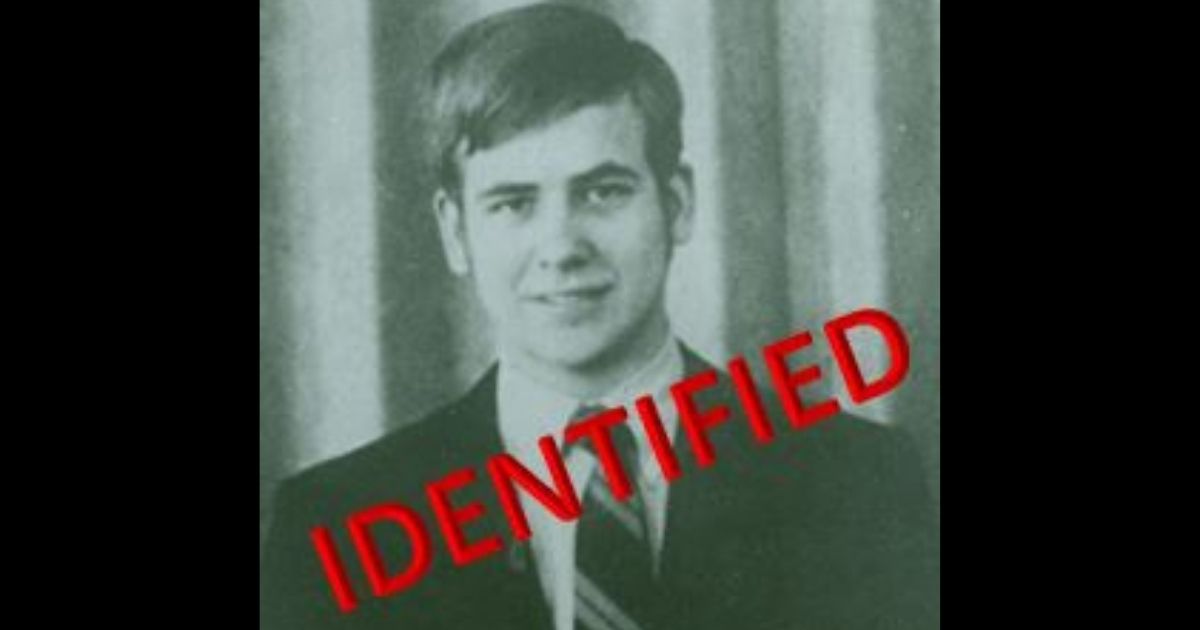Theodore John Conrad was just 20 years old when he pulled off the heist of a lifetime, according to the U.S. Marshals Service. The young man worked as a teller at the Society National Bank on Public Square in Cleveland and used to brag to friends that it would be easy to disappear with a large sum of cash.
Conrad was also a dedicated fan of the 1968 film “The Thomas Crown Affair,” which, according to IMDb, is about a “debonair, adventuresome bank executive” who “believes he has pulled off the perfect multi-million dollar heist, only to match wits with a sexy insurance investigator who will do anything to get her man.”
So enamored was Conrad of the dashing Steve McQueen and his actions that he planned out his own theft. The rubber met the road on July 11, 1969, the Marshals Service said in a news release on Friday.
It was a Friday, the end of the workweek, when Conrad coolly loaded $215,000 (the modern-day equivalent would be around $1.7 million) into a brown paper bag. He selected 1,500 $100 bills, 1,200 $50 bills and 250 $20 bills.
Then he disappeared. He changed his name, his birthdate, his lifestyle and his location.
The bank didn’t realize what had happened until that Monday when Conrad didn’t show up for work and they discovered the $215,000 missing — but by then, he’d had two solid days to slip away.
The story went wild. People thought they saw him in California, in Paris, in Hawaii — and one couple very well might have, when they were visiting the bar at the Princess Kaiulani Hotel in Waikiki about three months after his disappearance.
They struck up conversation with a young man also at the bar. When they mentioned they were from Ohio, the young man excused himself and disappeared, but he had already shared a few details about his life.
Deputy U.S. Marshal David Siler with the Northern Ohio Violent Fugitive Task Force told KITV-TV back in 2017 that they knew he’d been in the area, but the couple was able to give them more information.
“We were able to track him from Cleveland to Washington Reagan National Airport to Los Angeles, and the last stop we know of was in your great state of Hawaii and we believe there is somebody on that island that either knows him, knows of him or had a brief stint relationship with him,” Siler recalled.
“As soon as they mentioned Cleveland, Ohio, he got up, said oh excuse me, I have to use the restroom, he departed.
“He had an apartment. Apparently, he was renting that apartment so if he was renting that apartment, that means he made contact with someone, a landlord, somebody and he was paying cash obviously for his apartment.”
But he vanished again, leaving little trace.
For 52 years, authorities were unable to track him — until they made a breakthrough this year after comparing documents Conrad filled out in the 1960s with documents a “Thomas Randele” filed in more recent years.
Apparently, Conrad had changed his name to Thomas Randele, had a wife named Kathy and a daughter named Ashley, became a local golf professional and made a 40-year career of selling luxury vehicles.
“This past week, we identified Thomas Randele as Theodore J. Conrad,” U.S. Marshal Pete Elliot said, according to the Daily Mail. “He led an unassuming life in the suburbs of Boston, was very well liked in his community.”
One of America’s Most Wanted Fugitives Identified After 52 Years. Mystery solved of Ted Conrad, who pulled off one of the biggest bank robberies in Cleveland, Ohio history. pic.twitter.com/Jg4cbDmkfH
— U.S. Marshals (@USMarshalsHQ) November 12, 2021
While he’d made a life in Lynnfield, Massachusetts, his ill-gotten gains hadn’t served him particularly well: He had filed for bankruptcy in 2014.
And though his identity was finally confirmed, it was too little, too late. Conrad had died in May, age 71, from lung cancer.
In fact, his wife and daughter had had no idea about his heist until he told them on his deathbed. His obituary stated that he loved golf, cars and cooking, and spent a significant amount of time perfecting his skills and trying out new recipes for his wife and daughter.
For Elliot, the case is personal. His own father was also a U.S. marshal who died last year and never got to see the case closed.
[firefly_embed]
[/firefly_embed]
“This is a case I know all too well,” Elliot explained in the Marshals Service news release. “My father, John K. Elliott, was a dedicated career Deputy United States Marshal in Cleveland from 1969 until his retirement in 1990. My father took an interest in this case early because Conrad lived and worked near us in the late 1960s.
“My father never stopped searching for Conrad and always wanted closure up until his death in 2020. We were able to match some of the documents that my father uncovered from Conrad’s college days in the 1960s with documents from Randele that led to his identification.
“I hope my father is resting a little easier today knowing his investigation and his United States Marshals Service brought closure to this decades-long mystery. Everything in real life doesn’t always end like in the movies.”
This article appeared originally on The Western Journal.

























 Continue with Google
Continue with Google